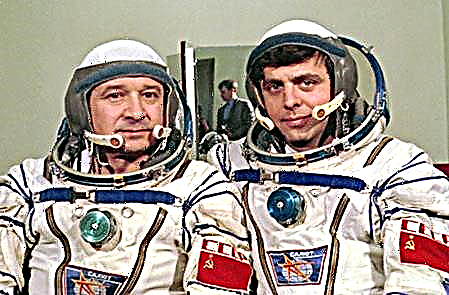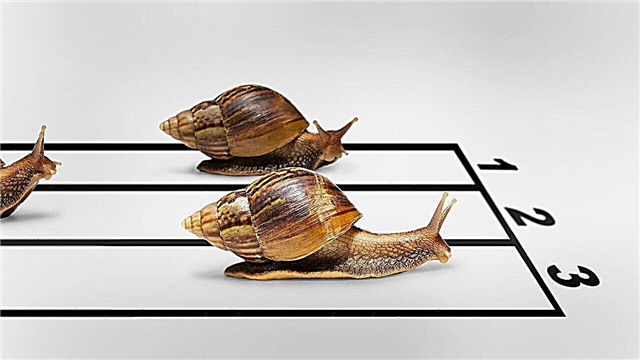Since time immemorial, inventors have helped to make our lives safer, easier and more comfortable. But not all creators were given the "green light", there were inventions that, despite their revolutionary nature, were not widespread, since influential forces did not give them a move.
Here top 7 useful inventions we'll probably never see.
7. Cloud Destroyer

It would be great to rain when necessary. It was this problem that the scientist Wilhelm Reich dealt with, who in 1953 created an invention called "Cloudbuster" (Cloud Destroyer). It was supposed to help farmers in Maine, as prolonged drought threatened to destroy their blueberry crops. When Reich made his first attempt to launch his creation, it was forecast that it was sunny in the vicinity. Several hours passed after the car started and thunderclouds appeared in the sky. And then about 0.64 centimeters of rain fell on the ground. After that, the government seized from the Reich his records and prototypes of the device. And a new Cloudbuster test did not follow. But the "Cloud Destroyer", perhaps, could solve the problem of food shortages in the arid regions of the Earth.
6. Electronic coding system

At the end of the 20th century, Jan Bernhard Slut developed a revolutionary data compression technique. According to the author of the invention, he managed to compress the film in one gigabyte to 8 kilobytes. Slut demonstrated the success of his project, playing 16 films from a single chip in 64 kilobytes. Investors have already attacked Slut with offers to buy this incredible invention, but the innovator died in suspicious circumstances.
5. Electric car (not a hybrid)

In the late 1990s, General Motors was the first to launch the GM EV1 all-electric car on the market. However, it was not intended for mass production. The company produced a total of 1,117 cars and all of them were available only on lease.
According to reports of that time, GM decided that customers were unhappy with the batteries installed in the car and chose to switch to more modern gasoline options. But there is an assumption that the corporation was simply pressed by large oil companies.
4. Carburetor Tom Ogla

In the 1970s, mechanical inventor Tom Ogle created a new type of carburetor. Although the Ogla device was tested and allowed a distance of up to 48 kilometers per liter of fuel, it was never produced commercially. The principle of operation of the carburetor was based on heating gasoline to produce steam, which then fell into the combustion chambers. This required a fuel tank having a structural support, like a pressure vessel. Not only did Ogle’s invention save motorists money significantly, it almost did not pollute the atmosphere. The inventor even claimed that the exhaust of a car equipped with its carburetor could “dry hair”.
Representatives of gas and oil companies have repeatedly contacted Ogle, offering money for “freezing” the development. However, the inventor always refused (although there were rumors that he still sold his brainchild). And on August 19, 1981, Ogle fell and died. An autopsy revealed that an overdose of propoxyphene and alcohol was the cause of death. Death was recognized as suicide after a cursory investigation, but several people close to Ogle indicated that they did not believe that the young mechanic could have killed himself.
3. Rife device

In third place in the ranking of amazing and forgotten in our days inventions is a cancer treatment machine. In 1934, it was created by the American inventor Royal Rife. With the help of a specially designed microscope, he, the first of the people, was able to see a live virus, too tiny to visualize it using previously existing technologies. After that, Rife demonstrated a device — a broadband generator of electromagnetic waves — capable of killing pathogens. Through long experiments, Rife has created a table of frequencies that are harmful to pathogens of various diseases.
There are 14 documented cases of Rife's cure for cancer patients whose illness was in their terminal stages. However, when the scientist refused to cooperate with the head of the American Medical Association (AMA), the organization used all its capabilities to devalue the work of Rife. The researcher accused the AMA, the Department of Public Health and other medical organizations of conspiring to dismiss and discredit him. He created the Beam Ray company, which produced 14 devices, but the company soon went bankrupt, doctors who supported and collaborated with Rife received grants for other studies, and again prescribed traditional cancer drugs to patients, and the doctor himself became desperate and turned into an alcoholic.
2. Water car

Riding with a breeze in a car filled with water is a pipe dream. But it could come true if Stan Meyer's invention got into mass production. This magnificent car spent a liter of water for 43 km. Colleagues close to Meyer said that they put a lot of pressure on him, forcing him to turn off work in the field of water-powered machines. But Meyer refused to bury his invention. Although the same colleagues and friends claimed that Meyer was poisoned for his refusal to obey large oil corporations, it is documented that the inventor suddenly died of a brain aneurysm.
1. Free energy

In the first place in the list of great lost inventions that were not given a go is the creation of the famous Nikola Tesla. He wanted to give free energy to humanity and, through well-documented trials, demonstrated that he could make his dream a reality. It is known that Tesla developed prototypes that enhance the wireless transmission of energy and can provide electricity to large areas that "feed" from just one tower. Although most people supported Tesla's idea, funding for his project was reduced to zero, and the scientist's laboratory mysteriously burned to the ground. Free energy is perhaps the most documented and globally significant project of all unrealized useful inventions in the world.












